Table of contents
Here are some tips on how to practice yoga!
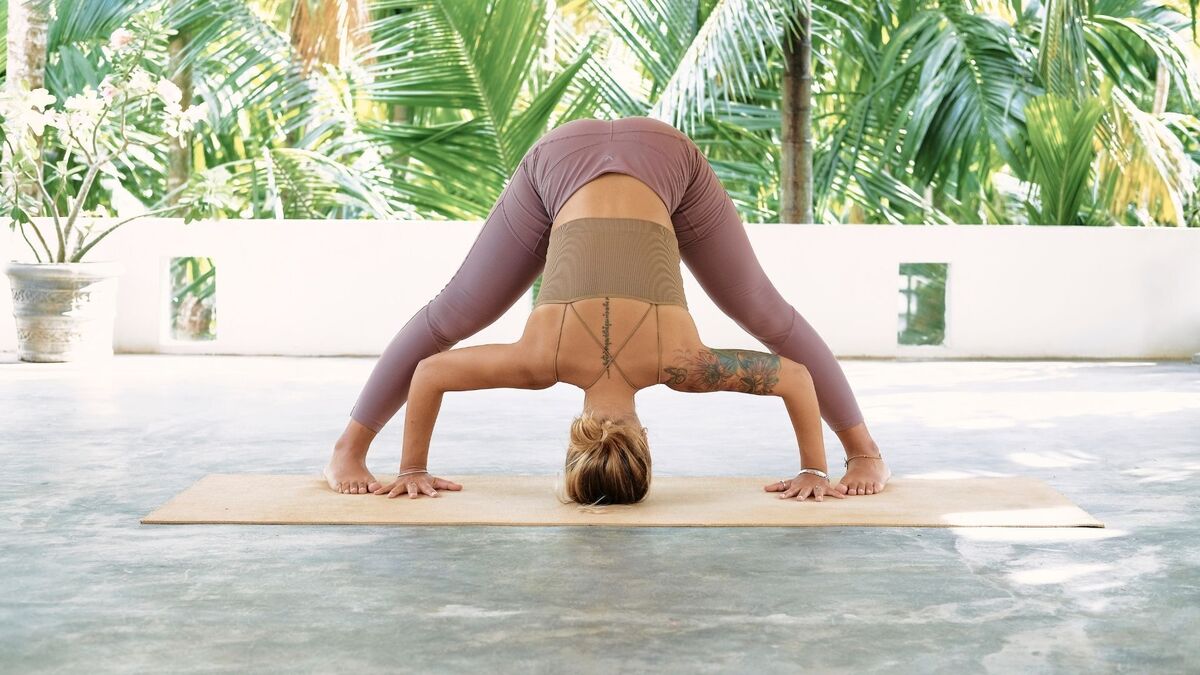
Yoga can be a challenging modality at first glance, or even seem too simple to be considered as a philosophy and lifestyle that uplifts the mind, body and spirit.
But the truth is that practitioners of this philosophy show in practice, in their daily lives, the benefits of connecting with this modality and how much they have improved their inner and outer connection after practicing yoga.
Some people may really want to start, but are afraid, so this article covers everything you need to know to safely and simply start practicing this philosophy of life called Yoga.
Knowing more about Yoga
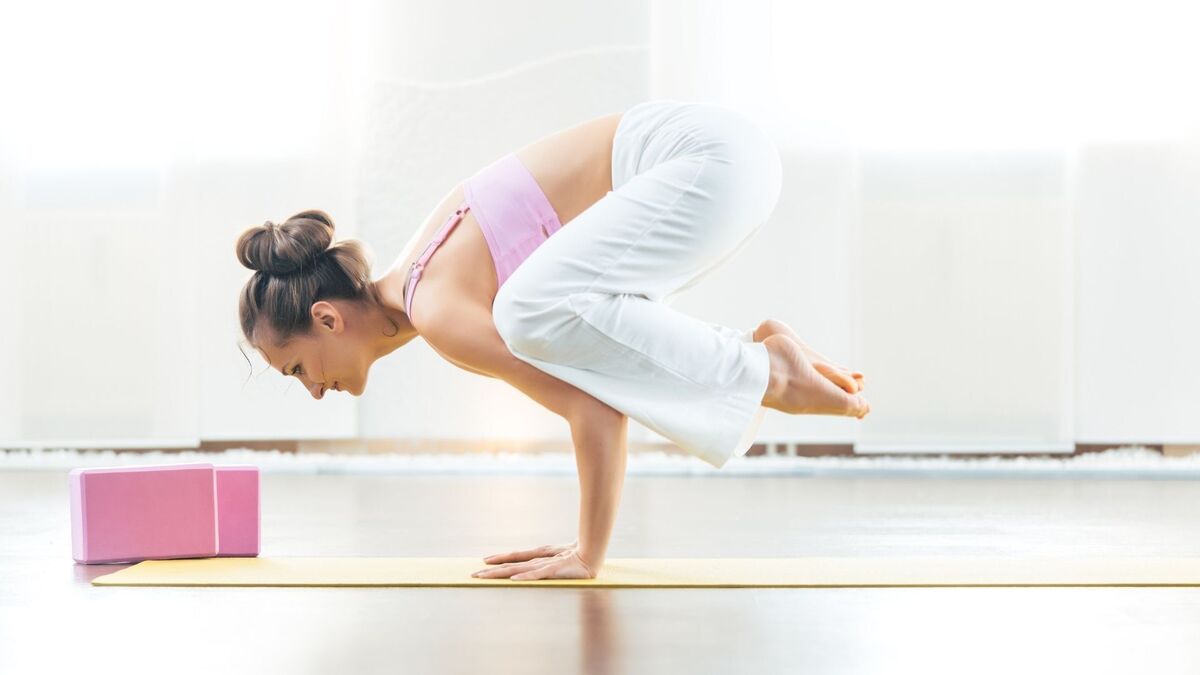
Most people, if you ask what Yoga is, will answer that it is an activity to increase stretching ability or some postures with the body.
But Yoga goes far beyond this, this is a superficial vision that shows in a summarized way what this philosophy and life style is about.
And it is important to clarify that Yoga is a philosophy, bigger than just positions. It is a mental, physical and spiritual philosophy. Learn more in this article about this powerful philosophy and how much it can help you in your daily life.
Source
Yoga is an ancient practice, difficult to pinpoint exactly how it began to be studied due to its spread. This philosophy is considered a science by its practitioners, with the purpose of self-development, which helps transform a dense and gross mind into a subtle mind. It is believed that the more subtle your mind is, the closer to the divine this mind becomesyou'll find it.
The word Yoga means "unification". The unification of the "lesser self", of the individual mind with the infinite, with the cosmic mind and with God. To unite the micro mind, of the individual, with this cosmic mind is the true goal of Yoga, through dance, chanting, positions, meditation and mainly to live in peace with the whole in a universalistic way.
History
Approximately 7,000 years ago, at that time in the Himalayas, there were many tribes, human beings were primitive and their minds were very brutish. Then the first great Yogin Sadashiva constituted a system and disseminated among his disciples, this system had as objective exactly to subdue the mind.
The dance and music already existed at that time, but Shiva refined the harmonic field of musical notes, to transmit serenity and calm. As in the Bible, the yogis believe that God created the world with sound, and that sounds have the greatest ability to help refine the mind, along with this was created the positions and thus spread to all.
Benefits of yoga
Hatha yoga is one of the techniques brought by Shiva, the Yoga of the body, presents the positions and brings several physical and spiritual benefits. The system of postures created by Shiva massages the glands of the human endocrine system and with that our mind becomes lighter, more balanced and much more serene.
Yoga positions have the ability to alter the productions of hormones in our body, and these hormones control everything in our lives. The production of endorphin, dopamine, serotonin and oxytocin, increases mood, prevents against depression, fights stress symptoms, helps regulate weight and prevents aging.
The benefits associated with Yoga can be seen in both the physical and spiritual realms. By achieving inner peace, you achieve peace with the world, becoming a more sociable person and protected against external attacks. Yoga brings you balance, and with it you expand everything in life.
Care
It is important to emphasize some care that you as a beginner need to have when you start in Yoga. Some pains and discomforts are expected, especially if the habit of exercise is not part of your daily life. However, if these pains are exaggerated, it is recommended not to continue with the same intensity and take it easy.
Another important thing is the routine, understand that yoga should be something pleasurable in your life, and not another commitment for you to fulfill. The energy of obligation can cause you frustration and especially energy depletion, because all the activities that we see as a burden, reproduce a negative energy that involves the magnetic field.
Which yoga practice to choose?
From Hatha Yoga, some other variations were developed in order to create a routine of fluid exercises that offer a number of variations. The ideal is for you to study and experiment with each one to identify with which you create more affinity.
Positions to start in yoga
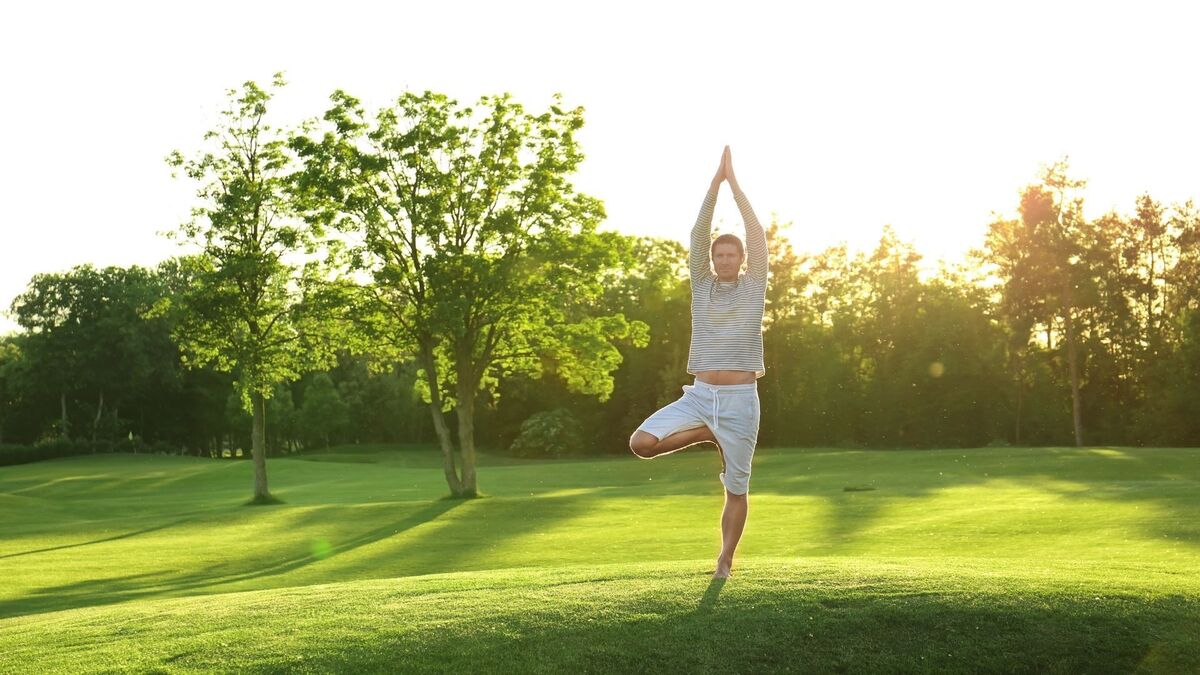
Yoga assumes the execution of some positions so that aligned with the breathing and the reflective moment can achieve calm and spiritual subtlety. Before the practice itself is ideal to start with the internal preparation, already seeking the calm and gentleness to start the philosophy.
Moreover the environment is essential for the success of the practice, so do it in a ventilated place, bright and that you can concentrate with attention and silence.
Listed below are some of these practices that can help you get started in the yoga universe.
Tadasana (mountain posture)
This is an extremely important posture because it is fundamental for other postures. It basically consists of you learning to stand up, but in a correct and conscious way.
Start by leaving your feet parallel in a harmonic way, look straight towards the horizon, find a point to focus on. Then feel how your knee is, the correct is not to extend or flex too much, fit the hip in the movement, let your shoulders and palms relaxed.
And finally the cervical, open a small space in it, lowering the chin, but keeping the posture straight. When you reach this composition, bring the body forward, until you feel the fingers pressed. At this moment, breathe and let your body memorize this position.
Utkatasana (chair posture)
Known as the power posture, it is excellent to achieve relaxation and transcendence. Starting from the "Tadasana" position, put your feet together and open wide your fingers, take a deep breath and then bend your knees taking your hips backwards as if you were going to sit. Keeping your gaze fixed on the horizon, in sync raise both arms upwards, with the palms of your hands open.
Feel the support well in the feet, especially the heels, try to leave the knees together with the thighs drawing an angle forward, the knees on the heels. The pelvis should be low directing the squisses slightly back, lengthen the sides of the body and let the neck and shoulders smoothly.
Adho Mukha Svanasana (posture of the dog looking down)
It is a position focused mainly on stretching the spine, you don't have to worry initially about whether or not your heels touch the ground.
Start with the position of 4 supports, keeping the legs in line with the hips, the arms should be in line with the shoulders. From this position, place the hands a little further forward (about 10 cm), try to leave the hand wide open, with the palms flexing on the floor.
Adjust your feet, resting your toes on the floor as if you were on tiptoe, and at that moment, project your hip upwards, getting into position. Now adjust the position, checking how your feet and hands are, your head should almost touch the ground, stay in position breathing and slowly trying to put your heel on the ground.
Vrksasana (tree posture)
The tree posture is a very well known posture and highly recommended for those who are beginning, it works balance, concentration, focus and strength.
Begin with the Tadasana pose. Start bringing your weight to the base leg, spread your toes wide, then position your left heel on the side on the inside of your right leg, adjust your hips wide and bring your hands together in front of your chest, this is the first variation of the tree pose.
Always take care of the posture of the hip, leave the leg that is on the side so well positioned. The most known variation, consists of fixing the same base, but instead of the heel resting on the lower leg, you raise your foot to the inner thigh, very close to the groin. Start from the bottom and build your balance.
Trikonasana (triangle posture)
An important position, however, with a degree of difficulty, so there are some variations for those starting out and those in the advanced degree.
Start with the Tadasana position, checking the whole position to make sure it is correct, then spread your legs about ten feet wide, respecting your height limits. Leave the ankle aligned, turn the right foot in front and leave the right heel in the same line as the middle of the left foot.
Be careful when rotating the foot, not to rotate the hip, it should remain straight, now lower the left knee, and open your arms wide, at this time raise your right arm up and left down, turn your head up and hold the position, breathing in and out.
Tips to start practicing yoga
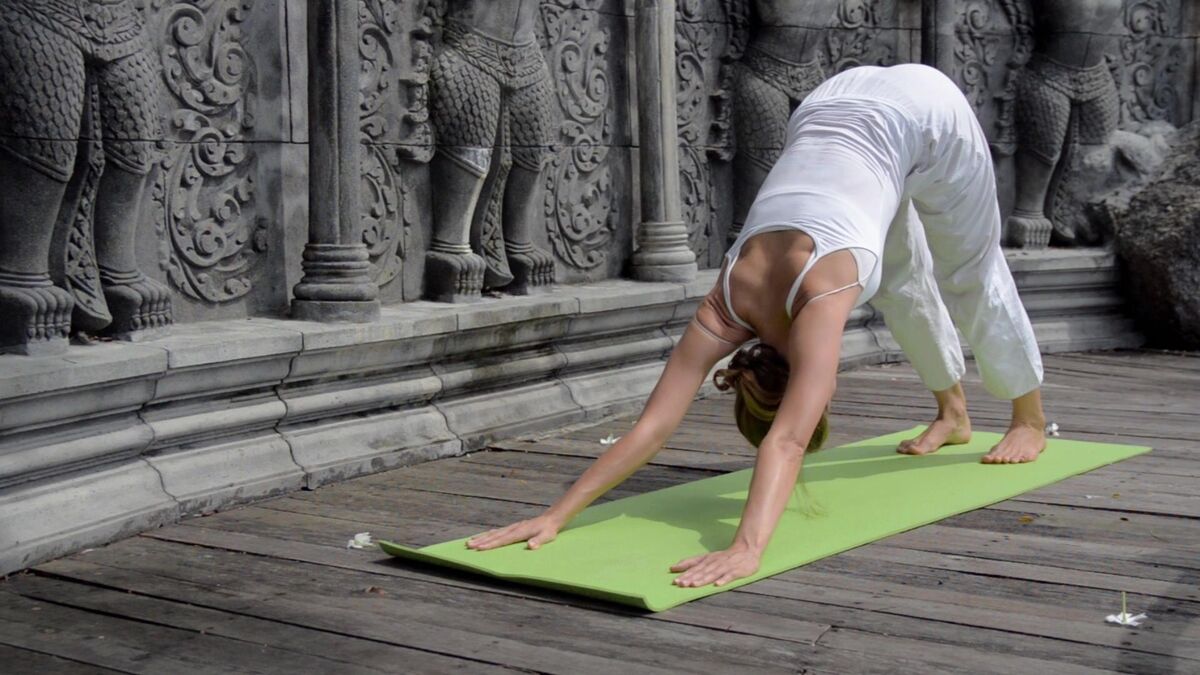
Yoga is a challenging and very responsible practice, despite being a spiritual practice, it is not easy because it involves the physical and depending on your preparation it may be more difficult for some than others. But this is not a reason to be discouraged, the practice of yoga is something evolutionary, in other words, start within your limits and grow a little more each day.
Like any physical exercise, yoga needs some time for your body to get used to it and understand what is happening, and besides that it is directly linked to your mind, the junction and balance between body, mind and spirit, so it is something that takes time, but some tips can help you in this process, making it easier and more enjoyable. So check out some keys belowimportant to start practicing this philosophy of life.
Create a ritual
Creating a ritual means ritualizing the moment of your day chosen for practice. This preparation can start even before the moment itself, if you have the habit, take a purifying bath before the yoga practice. Ideally you should have a reserved place where you can do it without disturbance, but in case you don't, prepare the environment before starting.
Light a candle with your thoughts on God, then light an incense to purify the air, put on some music and leave all the material you may need at hand so you don't have to go out to get it, and finally build a routine with a beginning, middle and end.
Set aside a large, spacious location
The ideal place would be the top of a mountain, or a valley in the middle of nature, where you can practice the positions and enjoy the connection with the green contemplating the divine. But nowadays very few people have access to these places, so reserve a place in your home or even office.
Preferably a spacious place where you will not feel trapped or bump into walls or furniture during the positions. The choice of a place is especially important because distractions can disconnect you from the main intent which is to internalize yourself to achieve subtlety in your mind, spirit and physical flexibility.
Choose a time when you are alone
Choosing a time when you are alone is not always possible, but to ensure maximum focus, it is highly recommended, unless who is with you is your yoga partner, then company is very welcome. One solution for those who do not have the time alone, is dialogue, expose why this practice is important to you and ask for help with silence.
Avoid eating before practice
In Yoga practice what always matters is balance, so if you eat a little before starting will make it difficult for you to perform the positions because your stomach is full, but it is not advisable to be hungry, because your stomach will make you lose focus, that's why balance is important, empty bags don't stand up.
Wear comfortable clothing
Eliminate everything that can hinder you during practice always looking for balance. Uncomfortable clothes is one of the things that can hinder you a lot, if it is too tight it will hurt you in some positions, if it is too wide, it will be falling in other positions, so a comfortable outfit helps you maintain focus and concentration.
Separate firm and bulky cushions
Unlike other physical practices, the material needed for yoga is extremely simple, basically what will keep you comfortable. The yoga mat as it is known, will be used in most positions, but there are others that especially in the beginning it is worth having some cushions that can help you maintain comfort and focus.
Start with easier postures
Practice several forms of Yoga and know the positions in depth, most of them have their variations for beginners, a golden tip is, even if you feel able to perform the most advanced, start with the beginner variations so you will do with more zeal and better understanding the step by step of the journey.
Use a suitable musical background
Music is part of Yoga, the first philosophy of Shiva was precisely in the harmony of sound, so choose the soundtrack according to the practice and exercise that will develop the day. Keep in mind that to achieve the subtlety of your mind, will not be only the positions that will help you, the music is not only part of it but it is essential.
Look for teachers to assist
The decision to have a teacher sometimes seems pointless with so much information available, but you can not look for answers to questions that you do not know, and that is precisely the role of the teacher, point the correct way, give you a step by step and remove doubts that most of the time you did not even know you had.
Respect your limits
It is perfectly normal to let the excitement and euphoria take over especially in the beginning, but respecting your limits is something extremely important, on the physical side there are injuries that can take years to improve, and on the spiritual side the fact of not respecting your limits can make everything more difficult and thus generate a frustration accompanied by a negative charge.
Yoga works body, mind and emotions!
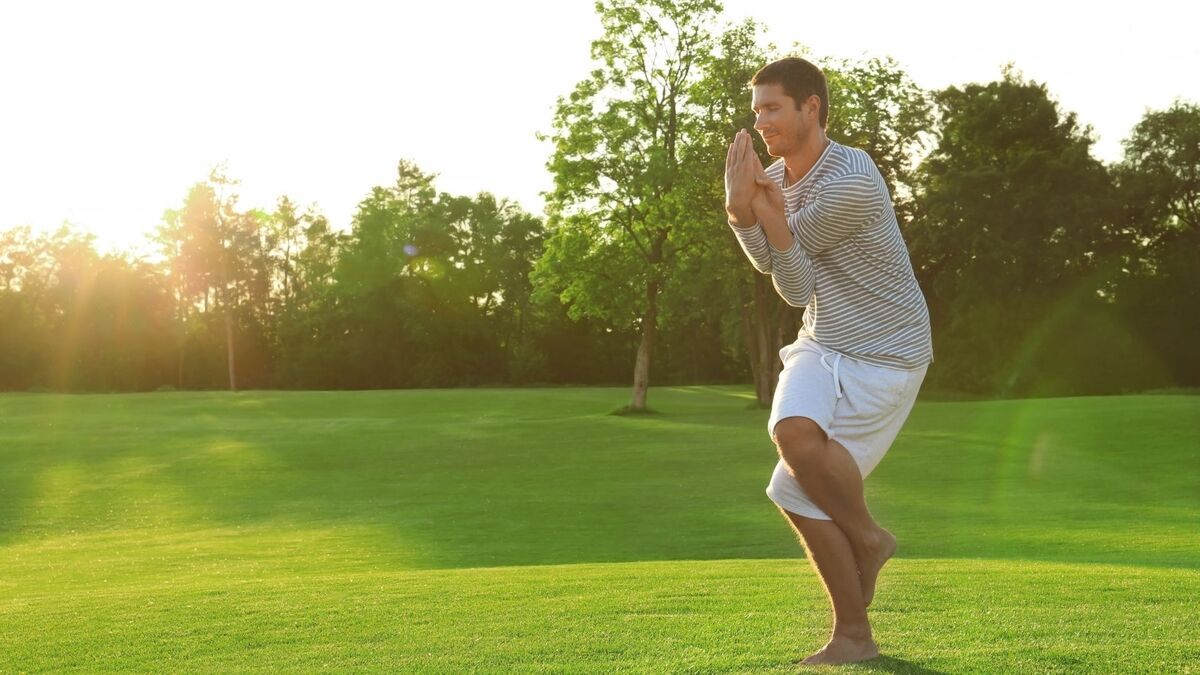
Yoga is much more than positions, stretching or flexibility of the body. Yoga was thought and developed to join body, mind and spirit in favor of a single evolution. When you begin to climb the ladder of human evolution and understand your "I", you awaken a new interpretation of your emotions and learn to deal with yourself.
With the practice of Yoga you evolve as a being, to understand and help the evolution of the world. You become more empathic with people and end up not letting your emotions take over your life in a negative way. Dealing with the internal you learn to deal with the external and become a cog of evolution in the great universe.

